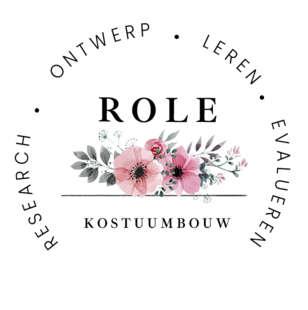
Eindelijk is het zo ver. Je gaat naar een evenement of hebt inspiratie voor een nieuwe dagelijkse stijl. Eentje die nog nooit eerder gezien is!
Maar… op internet is de kleding die je zoekt eigenlijk nét niet te vinden. En dan is er dat kleine, schijnbaar overmoedige stemmetje. Dan maak je het toch zelf?
Maar je hebt eigenlijk nog nooit een naald en draad vastgehouden, laat staan een naaimachine bediend. Wat dan?
Dan heb je ROLE kostuumbouw. Wil jij beginnen vanaf de bare basics van naaiwerk, maar niet patronen en kledingstukken overhouden die je toch niet gaat gebruiken, dan zit je hier goed, want hier leer je de technieken die nodig zijn aan de hand van de kleding of kostuums die jij zelf ontwerpt!
Als je nog niet weet of naaiwerk wat voor je is, is een machine een dure en ingewikkelde aankoop. Dit terwijl het werk met de machine ook met de hand kan worden gedaan. Voor een eerste kostuum is dit nét zo handig.
Alle projecten zijn door jou bedacht en ontworpen! Ik begeleid je met het vinden, aanpassen en uittekenen van de juiste patronen zodat de sky the limit is.
Een project “te hoog niveau”? Dat bestaat niet. Want vroeg of laat kom je er toch. Met mijn begeleiding leer je de technieken die je nodig hebt, niet elke die bestaat.
Als persoon op meerdere spectra heb ik ervaring hoe kleding je dag kan maken of breken. ROLE kostuumbouw heeft geen oordeel over hoe je je manifesteert, en waarom sommige stoffen of kledingstukken wel of geen optie zijn. Ik probeer met je mee te denken om jouw behoefte te passen binnen het bij mij bekende aanbod aan materialen.

Uiteraard is kleermaken een prachtige hobby. Maar in het leven zijn er al vele dingen die tijd of energie eisen. Het is dus begrijpelijk als je, om welke reden dan ook, geen tijd hebt om zelf aan de slag te gaan met een nieuw project, of nieuwe hobby.
Ook in dat geval help ik graag mee om mogelijkheden te verkennen. Ik kan delen of een geheel project overnemen zodat jij tijd overhoudt voor andere dingen die je net zo belangrijk vindt. Ook hierin is veel mogelijk. Ben je nieuwsgierig geworden? Vraag hier naar de mogelijkheden